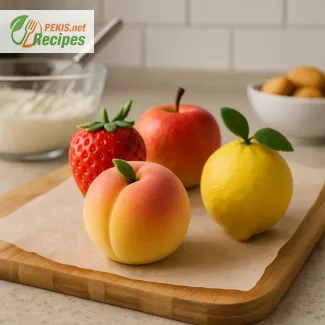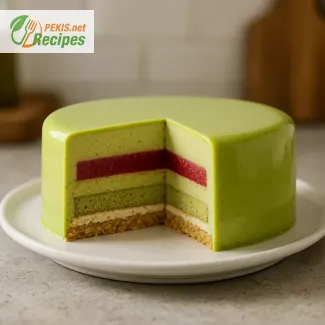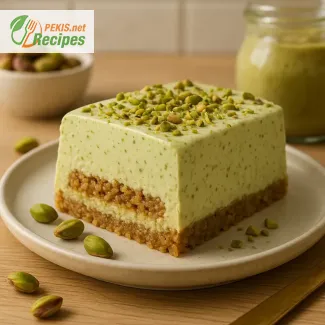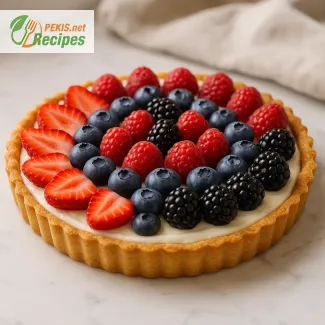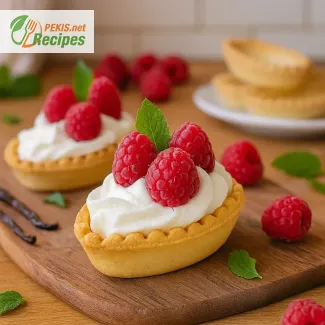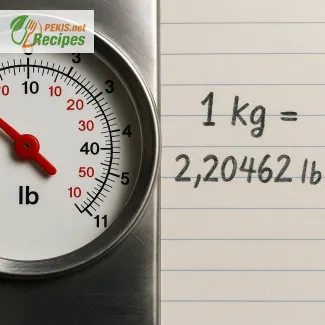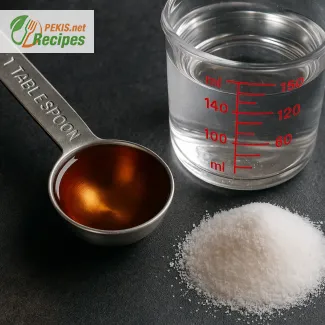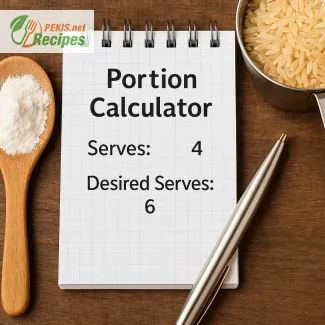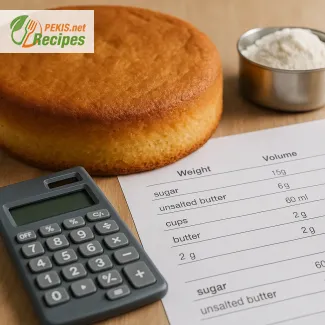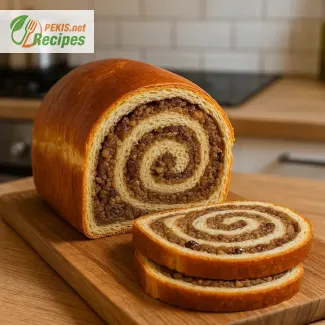
Discover the Timeless Delight of Slovenia’s Most Beloved Dessert
A rich heritage wrapped in a tender walnut swirl
Among the many treasured desserts of Central Europe, few evoke such deep-rooted cultural pride and festive warmth as the Slovenian walnut potica. This authentic nut roll recipe has been passed down through generations of Slovenian families, particularly during Easter, Christmas, and wedding celebrations, where it holds a place of honor on the holiday table. Known simply as potica (pronounced poh-TEE-tsah), this rolled pastry is much more than a dessert—it is a symbol of tradition, craftsmanship, and familial love.
Characterized by its delicate, yeasted dough and rich walnut filling, Slovenian potica is both elegant and rustic. It is lovingly handcrafted into a spiral shape that encapsulates the perfect harmony of a soft interior with a golden, lightly crisped exterior. The result is a beautiful swirl of finely ground walnuts, sugar, cream, butter, and often a hint of cinnamon or honey—ingredients that come together in an inviting aroma and comforting bite.
From monastery origins to modern-day tradition
The story of walnut potica dates back centuries, with early versions emerging from monasteries and country estates in what is now Slovenia. Potica was not an everyday dessert—it was a feast-day delicacy, prepared with care for religious holidays and family milestones. Over time, dozens of regional variations developed, some with tarragon or poppy seeds, but the walnut version remains the most iconic.
This distinctive cake reflects Slovenian culinary values: simplicity, resourcefulness, and respect for natural ingredients. Even today, it is often prepared in ceramic or bundt-shaped molds known as potičnik, which give the cake its signature domed appearance and encourage even baking. While modern baking techniques make the process easier, traditionalists still knead the dough by hand, roll it out thinly, and spread the nut mixture with careful precision before forming it into the recognizable spiral.
The perfect balance of flavor and texture
What sets potica apart from other European nut rolls is its remarkable balance of flavor and texture. The dough is enriched yet light—thanks to a blend of milk, eggs, and yeast—and it gently encases the walnut filling without overpowering it. The filling itself is smooth and slightly sweet, offering a mild nuttiness that complements the soft crumb of the pastry. When baked to golden perfection, potica becomes a delicate blend of buttery layers and rich walnut aroma.
Serving a freshly baked slice of potica brings joy to any table. It pairs beautifully with coffee, herbal tea, or a light dessert wine, and its flavors continue to deepen a day or two after baking. Whether dusted with powdered sugar or served plain, Slovenian walnut potica is a cake that invites both nostalgia and admiration.
Celebrating the artistry behind every slice
Though it may appear simple, mastering potica is considered a mark of true baking skill. Every aspect—from rolling the dough evenly to avoiding cracks in the spiral—demands patience and attention. In Slovenia, it's not unusual for families to spend an entire afternoon preparing it together, passing down tips and techniques from one generation to the next.
Today, this traditional potica with walnuts is gaining popularity far beyond Slovenia’s borders. Whether served at festive gatherings or baked as a thoughtful homemade gift, it captivates with its visually stunning swirl and deeply satisfying taste. Those who try it for the first time are often surprised by its subtle elegance, while those who grew up with potica embrace it like a beloved memory brought back to life.
The beauty of potica lies not just in the ingredients, but in the story it tells—a story of heritage, hospitality, and the quiet joy of handmade food. For anyone seeking to recreate a meaningful dessert with heart and history, this authentic nut roll recipe offers the perfect starting point.
- Activate the yeast
Warm the milk to about 35–40°C (95–105°F). In a small bowl, combine the warm milk with yeast and a teaspoon of sugar. Let it sit for 10–15 minutes until foamy. - Make the dough
In a large mixing bowl, combine the flour, sugar, salt, lemon zest, and vanilla. Add in the eggs, softened butter, and the activated yeast mixture. Knead until the dough becomes smooth and elastic, about 10 minutes by hand or 5 minutes with a dough hook. - First rise
Cover the dough with a clean cloth and let it rise in a warm place for 60–90 minutes, or until it doubles in size. - Prepare the walnut filling
In a saucepan, bring milk to a simmer. Add ground walnuts, sugar, honey, and butter. Cook gently while stirring for 3–5 minutes until the mixture thickens slightly. Remove from heat and stir in cinnamon, rum or vanilla, egg yolk, and optional raisins. Let it cool completely. - Roll and fill the dough
Roll the dough into a rectangle about 0.5 cm (¼ inch) thick on a lightly floured surface. Spread the cooled walnut filling evenly over the dough, leaving a 2 cm (1 inch) border. - Roll into a spiral
Starting from the longer side, gently roll the dough into a tight log. Seal the ends and edges by pinching them closed. - Shape and second rise
Carefully place the rolled dough into a greased potičnik (traditional fluted mold) or bundt pan. Alternatively, roll into a free-form log and place on a lined baking tray. Cover and let rise again for 30–45 minutes. - Preheat and bake
Preheat the oven to 180°C (350°F). Brush the surface of the dough with beaten egg. Bake for 50–60 minutes, or until golden brown and a skewer comes out clean. - Cool and serve
Let the potica cool in the pan for 15 minutes, then turn it out onto a wire rack to cool completely before slicing.
Elevating the Art of Homemade Walnut Potica
Expert tips and ingredient adjustments for better flavor, texture, and nutrition
Few traditional desserts offer as much opportunity for refinement and creativity as Slovenian walnut potica. While the classic recipe is beloved for its rich taste and heritage, there are many ways to enhance the flavor, texture, and even nutritional value without compromising authenticity. Whether you're a seasoned baker or trying potica for the first time, understanding the science and tradition behind each step can elevate your results and make the experience even more rewarding.
Enhancing the walnut filling for depth and aroma
The heart of potica lies in its walnut filling. Traditionally, ground walnuts are combined with milk, sugar, butter, and sometimes honey. To deepen the flavor profile, consider lightly toasting the walnuts before grinding. This brings out their natural oils and intensifies the nutty aroma. Adding a small amount of espresso or finely grated dark chocolate to the filling introduces a subtle bitterness that balances the sweetness and adds complexity.
For additional richness, replace part of the milk in the filling with heavy cream or a spoonful of sour cream. This not only enhances the texture but also gives the filling a creamy, velvety quality. Including a splash of dark rum or orange liqueur can also elevate the flavor and add a festive note.
Dough upgrades: softer, lighter, and more aromatic
The dough of a well-made potica should be soft, elastic, and lightly enriched, but not heavy. To improve its texture, substitute part of the flour with cake flour or sifted spelt flour, which lowers the protein content and leads to a more tender crumb. For extra softness, add a spoonful of plain yogurt or sour cream to the dough, which enhances both flavor and moisture.
You can also infuse the dough with additional aromas. A pinch of freshly grated nutmeg, a hint of almond extract, or finely chopped candied orange peel can give the dough a subtle but distinctive fragrance that complements the walnut filling beautifully.
Avoiding common pitfalls
Baking potica at home comes with its challenges, especially for first-time bakers. One of the most common mistakes is rolling the dough too thin or too thick. A dough that is too thin can tear and allow the filling to leak out, while a thick dough overpowers the filling and results in an unbalanced bite. Aim for a thickness of about 0.5 cm (¼ inch) to achieve the ideal ratio of dough to filling.
Another frequent error is overfilling or applying the filling while it’s still warm. This can cause fermentation bubbles or cracks in the final roll. Always allow the filling to cool completely before spreading and leave space at the edges to prevent overflow during baking.
Making potica more wholesome
For a healthier version of walnut potica, small changes can yield impressive results. Instead of refined white sugar, opt for unrefined cane sugar, coconut sugar, or maple syrup in the filling. These sweeteners offer a deeper, caramel-like flavor and a more natural sweetness.
Replacing part of the butter with cold-pressed walnut oil not only supports the nutty flavor but also increases the level of heart-healthy fats. Use whole grain spelt flour or a blend of white and whole wheat flour for a higher fiber content without making the dough overly dense.
In the filling, consider reducing the sugar and increasing the use of natural sweeteners like mashed dates or applesauce, which contribute both sweetness and moisture. Adding ground flaxseed or chia seeds to the walnut mixture can improve the nutritional profile and add texture.
Why homemade always tastes better
Homemade potica stands apart from store-bought versions due to the freshness of ingredients, control over flavor, and the ability to personalize the recipe. When prepared at home, you can adjust sweetness levels, select higher-quality nuts, use real butter, and avoid preservatives and artificial flavors often found in commercial products.
Moreover, the act of making potica by hand — kneading the dough, preparing the filling, and carefully rolling each layer — brings a sense of connection to tradition. It transforms baking from a task into a ritual, and the result is not just a dessert, but a piece of heritage, lovingly reimagined in your own kitchen.
Seasonal variations and creative twists
While the classic walnut version is iconic, potica offers plenty of room for creativity. Try combining walnuts with ground hazelnuts or pistachios for a more complex nut profile. Incorporate dried cranberries or chopped apricots for a tart contrast, or swirl in a layer of poppy seed filling alongside the walnut for a stunning visual and taste combination.
For holiday variations, add pumpkin puree to the dough in autumn or use cinnamon and clove blends for a warm winter aroma. If you’re preparing it for a brunch or lighter occasion, use citrus zest and a honey glaze to keep it bright and refreshing.
With every improvement, substitution, or seasonal adaptation, potica remains at its core a dessert of celebration, care, and craft. Mastering its nuances allows you to not only preserve a culinary treasure but to make it your own—slice by slice.
Allergens present in the recipe
- Gluten (from all-purpose flour)
- Dairy (milk, butter)
- Eggs
- Tree nuts (walnuts)
Suggestions for allergen substitution
- Gluten-free: Use a certified gluten-free all-purpose flour mix with added xanthan gum
- Dairy-free: Substitute milk with almond or oat milk; use plant-based butter
- Egg-free: Replace eggs with unsweetened applesauce (60 ml per egg) or a commercial egg replacer
- Nut-free: Replace walnuts with sunflower seeds or pumpkin seeds, though flavor will vary significantly
Vitamins and minerals per serving (approximate)
- Vitamin E: 2.1 mg – Supports immune system and cell protection
- Magnesium: 45 mg – Important for nerve and muscle function
- Phosphorus: 95 mg – Helps form bones and teeth
- Iron: 1.2 mg – Essential for red blood cell production
- Vitamin B1 (Thiamine): 0.2 mg – Supports metabolism
- Vitamin B6: 0.1 mg – Important for brain health
Antioxidants per serving (approximate)
- Polyphenols from walnuts: 300–350 mg – Help reduce inflammation and support heart health
- Flavonoids (from cinnamon and raisins): 50–70 mg – Support circulation and cellular protection
- Vitamin E: 2.1 mg – Functions as a lipid-soluble antioxidant, protecting cell membranes
